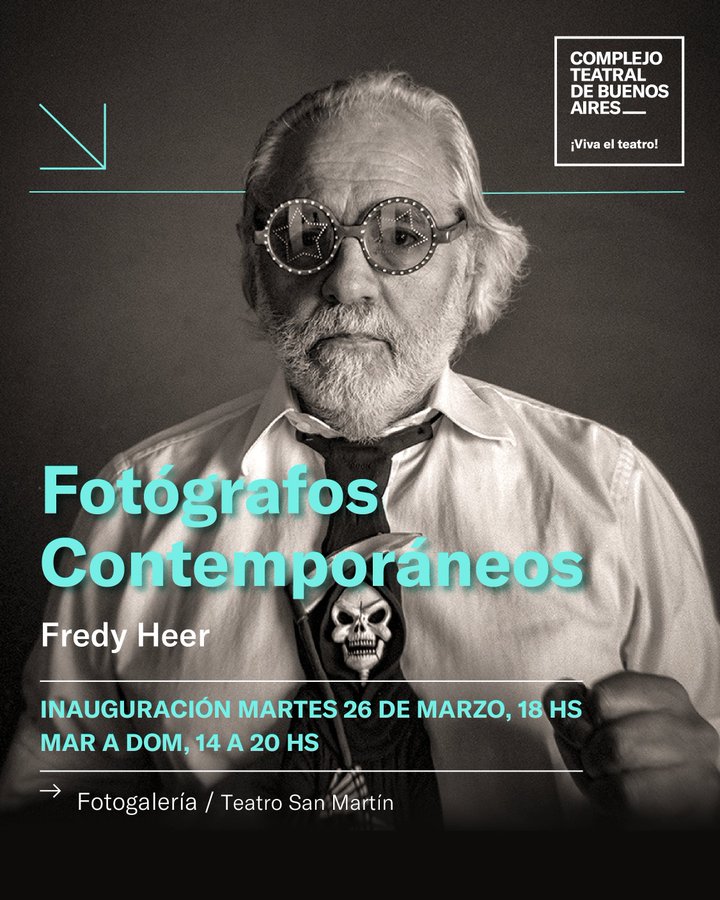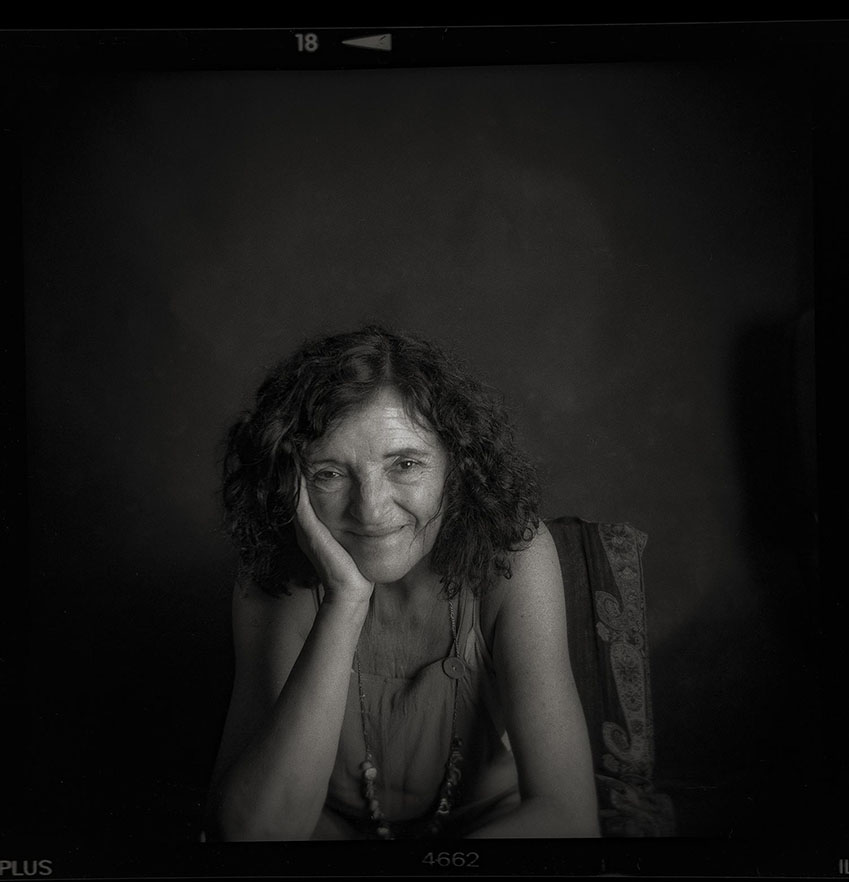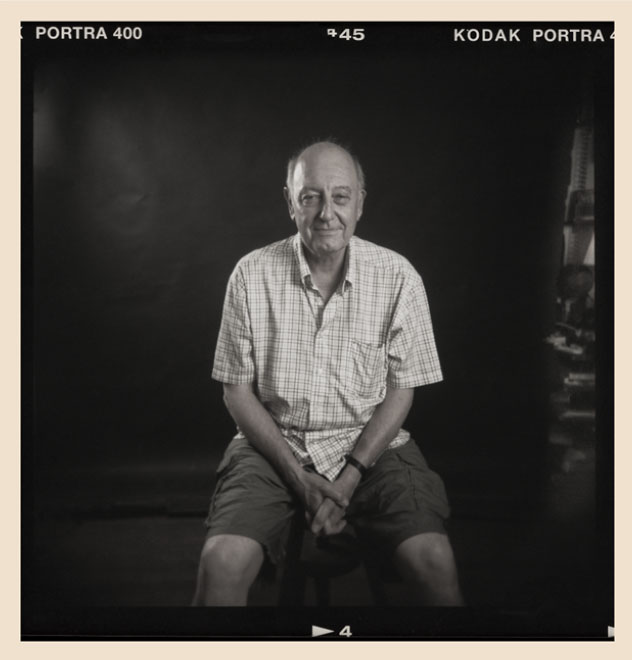"What is inherited is not stolen"
Protected by this popular saying, the Argentine photographer Fredy Heer continues with determination the saga of the creative effort inherited from his European immigrant ancestors, who around 1856 and with enormous effort, founded the mythical Santa Fe colony of Esperanza, dedicated to rural exploitation in the so-called "Pampa gringa."
Furthermore, the theological virtue of hope always guides our talented photographer, whose camera was influenced from the beginning by the figure of his father, laboratory worker and collaborator for years of the legendary artist Fernando Paillet (1880 - Esperanza - 1967), whose work grew willing to capture in black and white images the deep soul of the Esperanza people.
Fredy's love affair with the camera obscura began around 1968 when he landed in the demanding world of local photojournalism, covering news instantly for media outlets such as Prensa Gráfica and el Nuevo Diario. In search of greater challenges and instinctively following the well-known saying that warns that "God is everywhere... but he serves in Buenos Aires," he arrived in the populous city and soon became involved with the exclusive world of art galleries, documenting pictorial works of relevant figures such as Benito Quinquela Martín from Boca or Raúl Soldi, among other gifted brushes.
His passion for press photography leads him in turn to collaborate with different Buenos Aires media, such as special reports for the monthly magazine EL Expreso Imaginario (1976-1983) or articles in the newspaper La Razón. Expanding his creative horizon, he ventured into the difficult field of portraiture, with special emphasis on the formation of a collection on writers and poets of great national prestige such as, among others, José "Pepe" Bianco (1908 - Buenos Aires - 1986), Olga Orozco (1920 - 1999) and Adolfo Bioy Casares (1914 - 1999), protagonists of works of character that, at the time, were presented with notable success at the Recoleta Cultural Center.
Like every professional photographer, Fredy Heer has successfully navigated the wide range of possibilities offered by this special art, capturing in a decisive moment the multiple reality that surrounds us. For a living, his teams were in the service of work assignments as is common in this environment, but something was going to change significantly in his career towards the end of the 1990s.
Experiment and explore
Let the author himself introduce us to that important personal change in his career: «In '97 I bought a Holga camera in New York. I thought it would look great as decoration, but a friend encouraged me to take photos. The Holga is an analog camera characterized by its simplicity, which offers a wide possibility of intervention by the photographer and a great margin for contingency and play. It was then that I began this project with the intention of putting together an archive of registered photographers. "It is the gift that I want to give to Argentine photography."
We must point out that Fredy Heer's own house has always been the warm home of Argentine photography. Together with his wife and children as permanent collaborators, an endless parade of creative photographers set up shop here, turning it into a center, a "sui generis" atelier with its improvised backdrops, lights, decorations, installations and even the exhibition of a collection of cameras. Argentines and foreigners of all kinds.
If "photography" derives from the Greek words: "photo" (light) and "graphy" (writing), the new word - which emerged in the mid-19th century thanks to the inventions of Niépce, Daguerre and Talbot - indicates that the act of photographing is literally "writing with light." At this point we can affirm that using the artificial lights of his home redoubt or thanks to the "plein air" light of the fascinating Buenos Aires and much of the country, our author launched into the adventure of his life, to experiment or, rather, to create unsuspected images with that simple Holga camera. A passion, a creative path, had been born in him, which would not abandon him!
The Holga plastic camera is medium format and for 120 film, it has a 60 mm meniscus type lens and a speed of 1/100 s. and B. It emerged around 1986 in Hong Kong for the huge Chinese market in need of simple and economical equipment. Its notorious technical deficiencies, such as light leaks, excessive saturation, overexposed snapshots, chromatic aberration, a "terrible" lens or lack of precision, captured the imagination of a segment of creative photographers in the West, who enthusiastically adopted it precisely for these reasons. characteristics that clearly contrast with the sophisticated European and North American 35 mm equipment.
In distant Argentina Fredy was one of the pioneers in its use and definitely the most enthusiastic of them; During the terrible Covid 19 epidemic, their practice was obviously homemade action and, after the scourge, the city and its neighborhoods were the scene of captures with really interesting shots of urban scenes that range from Palermo to Villa 31, with repeated records about old cars, humble workers, popular sports or small merchants.
His militancy prompted him to form an active group of "holgueros" among whom are Ayelén Guarino and Alejandro Pagni, and of course he has held various public exhibitions. He also experimented with panoramic images and even pinhole recordings. His analog negatives - with Kodak Portra 400 - are turned into prints, preferably in black and white, but he also uses color.
Unfortunately, in 2022 he was diagnosed with ALS (Amyotrophic Lateral Sclerosis) and, despite his terrible illness, he has redoubled his projects.
It was precisely with these rudimentary Holga equipment that he began several years ago one of his most important initiatives, photographing his dear colleagues in the field of national photography. That is to say, he set out to create and compile invaluable iconography, which does not have similar precedents in our environment.
In that difficult artistic discipline such as the posed studio portrait with its lights and subtle shadows, Fredy Heer from Santa Fe unknowingly continued the saga begun 181 years earlier, when in Buenos Aires itself the North American daguerreotypist John Elliot captured portraits of ladies of wide crinolines and gentlemen with top hats and canes, through those magical metallic images on mirrored silver.
Contemporary photographers. An unmissable sample
The culmination of such an effort was rewarded during the evening of Tuesday, March 6, with the inauguration of the extraordinary exhibition "Contemporary Photographers" in the renovated FotoGalería of the Buenos Aires Theater Complex and now under the intelligent direction of the renowned photographer Claudio Larrea and curated by veteran artist Andy Goldstein. In the center of the space and in a special display case, the two photographic worlds of Fredy Heer were displayed; his enormous collection of photojournalist credentials and several of his beloved, colorful Holga cameras.
We had the opportunity to share that massive event, glass in hand. The exhibition brings together Holga portraits of more than 60 central figures in our photography. In the spacious and bright gallery - founded around 1985 by Sara Facio and continued by Juan Travnik - the joyful reunion of so many and their infinite stories turned that night into an unforgettable evening. Axel Alexander has managed to define Fredy's warm personality: "Friend to everyone, generous, supportive and definitely a great guy."
At the start of the 2024 season in this Buenos Aires room, it began with an exhibition that we consider unmissable. His new director, Claudio Larrea, knew how to choose from Fredy Heer a monumental iconography of his peers, his contemporaries, to form a visual gallery that deserves to be included in a future book.
The exhibition will remain open until Sunday, May 26, from Tuesday to Sunday and from 2 to 8 p.m. on Av. Corrientes 1530, in the Autonomous City of Buenos Aires.
* Special for Hilario. Arts Letters Trades



